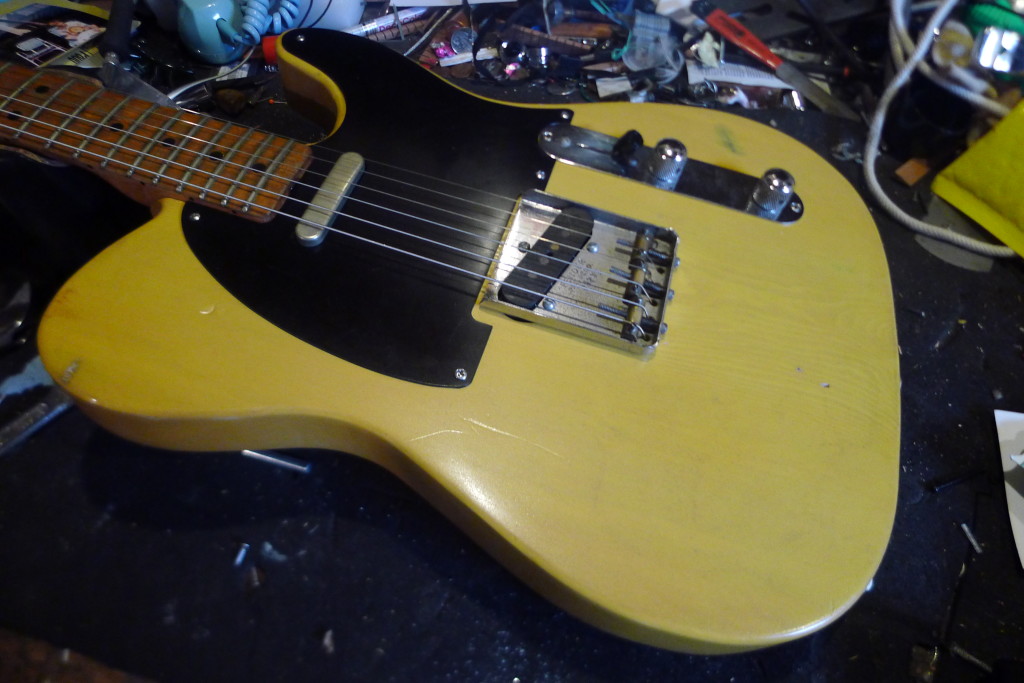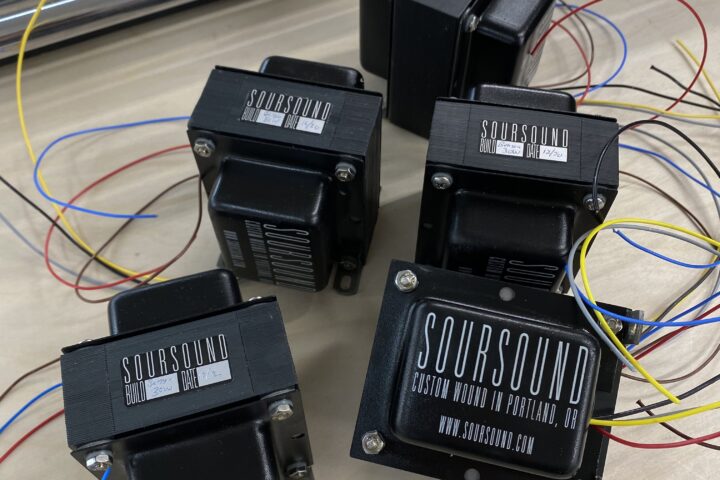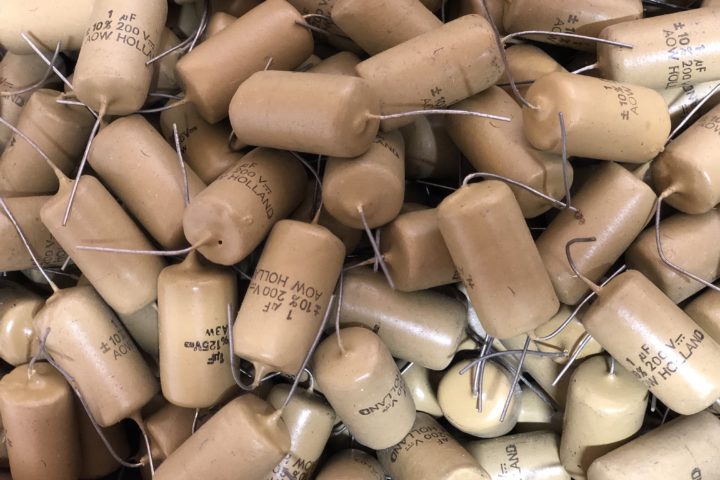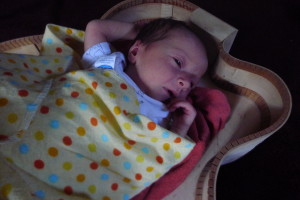
Our latest Bench Press features Damon Smith from Portland, Oregon. Smith has been building off-and-on for almost 20 years. As of late, he’s been focusing on building guitars out of reclaimed wood that gives instruments a beautiful antique patina and an amazing tone. Here, Smith tells us how how he got into lutherie and what inspires him today.
Fretboard Journal: So, what’s on the bench right now?
Damon Smith: The bench looks like it blew up right now! It’s all covered with stuff. We just had a baby about 11 days ago, so the baby is on the bench.
But they are a couple things actually on the bench. I’ve been working on a harp guitar – I’ve wanted to do a harp for a long time. The other thing I’m working on is a Gibson L-1-like body. I found one existing picture of an L-1 archtop. So I took that and I’m doing this sort of ‛30s Gibson body size archtop… but it’s fretless.
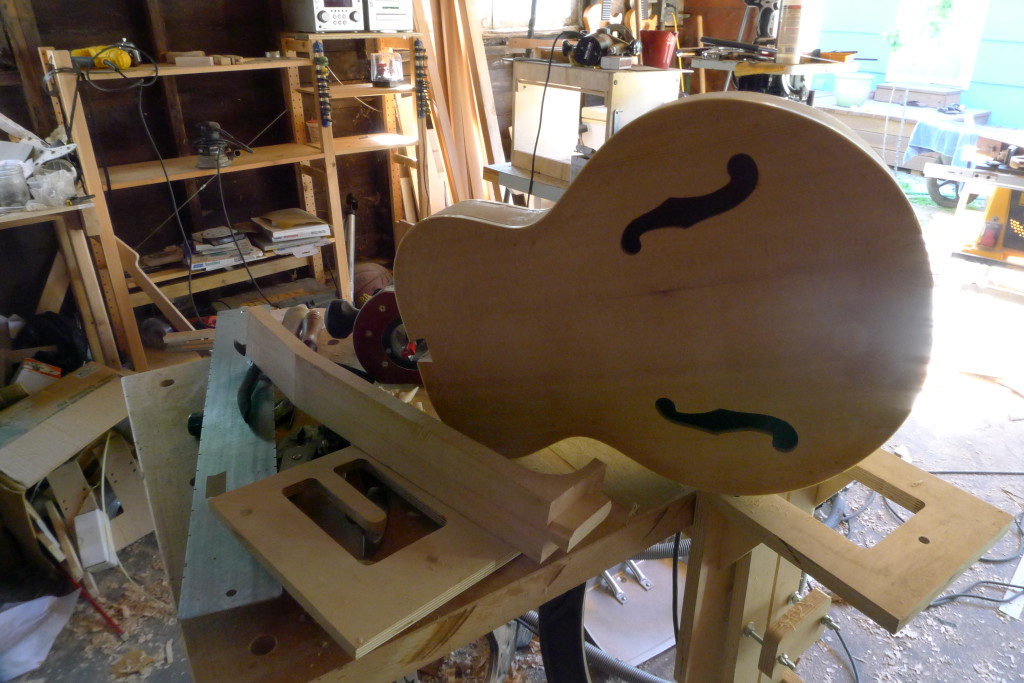 Most of what I do is use reclaimed, recycled, sustainable wood. We’ve got this non-profit in Portland called the ReBuilding Center, and what they do is they go around and deconstruct old houses. They’re able to use about 90 percent of the building materials over again. So I go and I get 100-year-old, clear vertical grain fir from old buildings here and use that.
Most of what I do is use reclaimed, recycled, sustainable wood. We’ve got this non-profit in Portland called the ReBuilding Center, and what they do is they go around and deconstruct old houses. They’re able to use about 90 percent of the building materials over again. So I go and I get 100-year-old, clear vertical grain fir from old buildings here and use that.
In general, I do a lot of classic, ‛50s style solid-body design: Teles, Strats, Gibson-type stuff. I’ve been trying to figure out what makes sense, in terms of a harp guitar. A few months ago, I was dropping off a guitar at a Spiritualized show and talking to [band leader] Jason Pierce. He was talking about how he wanted somebody to put together a Vox Phantom for him. He had all the parts, but he didn’t have the body. And I was like, “Wait a minute, maybe that’s it! Maybe that’s the body shape that can accommodate a harp.” I hadn’t really thought about that kind of body shape.
So, right now, it’s sort of like the phantom body with a harp arm coming off of it. It’s being designed as it’s built. So, it’s a design/construct kind of thing.
When you look at the old acoustic harp guitars, they have that huge arm coming out of them. When you start to do that with a solid body, you’re talking about just a ridiculous mass of wood.
FJ: Do you play the harp guitar?
DS: No, I never have. I listened to Michael Hedges a lot when I was in high school and I saw him a couple times. That was when he was first bringing out the Klein harp guitar. I think I may have picked up a couple of Dyer knock-offs at [Portland instrument shop] Lark in the Morning, but I never really sat down with one. I did build this kind of strange and very heavy Rickenbacker inspired double-neck for a friend of mine a few years ago. That was the closest I came to it.
FJ: So you just wanted to challenge yourself with the harp guitar build?
DS: Well, I think that’s a lot of what inspires me to do stuff, solving problems with new projects. At the same time, it’s something I wanted to play, too.
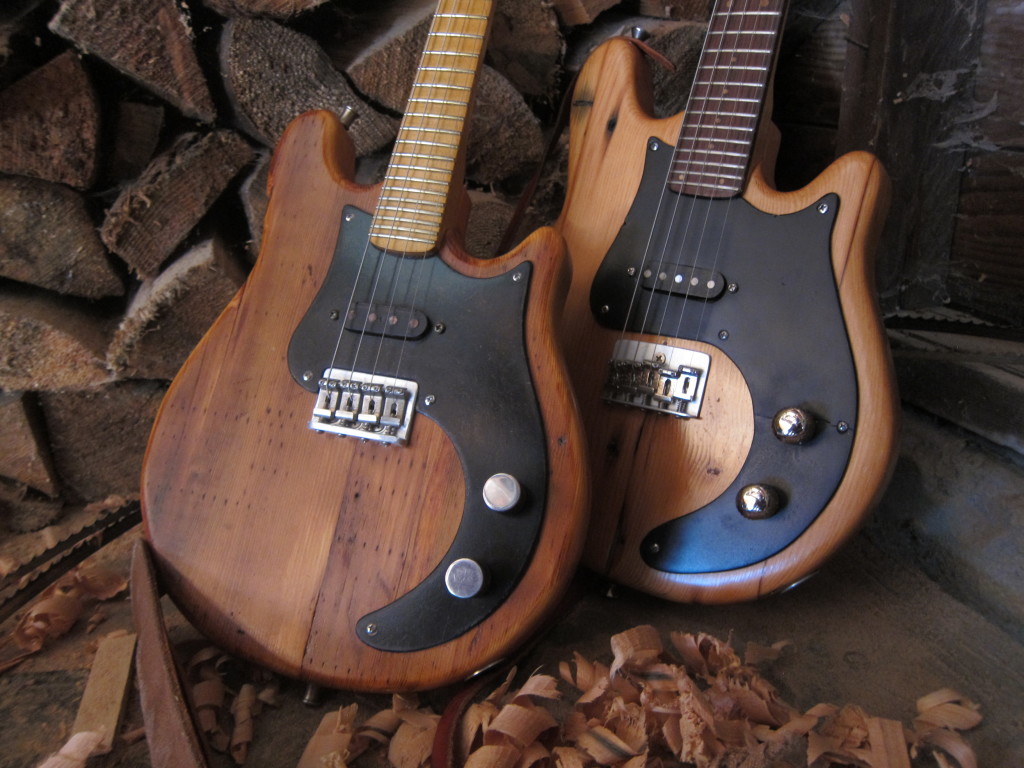 FJ: You mentioned briefly your use of recycled and sustainable wood. Can you elaborate a bit more on that?
FJ: You mentioned briefly your use of recycled and sustainable wood. Can you elaborate a bit more on that?
DS: Yeah. I trained at Summit, on Vancouver Island. That was in ‛99. So I’ve been building on and off for about 16 years, in fits and starts. It’s always like, “Okay, I’ve got a shop set up.” And then I move or have a kid or I have to sell equipment. I’m in a space right now where I’m able to build and see what happens and work a day job. It’s all fine.
But I got to a point a couple years ago where I was buying all these new parts and building and I found myself thinking, “Does the world really need me to be sitting here building new guitars?” How many guitars are there in the world?
So I took a break from building for a couple years and I started getting really roughed-up old Teles that had been submerged in water or had fire damage. It was a cool way to get my hands on a lot of old Blackguards and mid-‛50s Teles and Esquires and to feel what they feel like and see what they look like. And then kind of put new life into them.
That’s another thing that just left the bench. I have a ‛52 Tadeo Gomez neck – it’s just a great Tele neck. When I got this neck, there was no finish left on it. I think it had one re-fret done where somebody leveled the frets or beveled the treble side, and it just went way far into the wood. And the neck is just battle-scared. But it’s the greatest feeling Tele neck ever.
So I had this neck. I got the original bridge plate and the electronics that went with it. But I build a body for it out of 100-year-old pine. I thought it’d be better to take this old stuff that’s already out there, give it some love and kind of put new life into it.
FJ: How did you get into building?
DS: I got my first like real guitar when I was 15. It was an ‛85 Japanese Jazzmaster reissue and I wanted one because Robert Smith [of the Cure] played it. The only one that I could find was in Cleveland, Ohio and it was candy apple red.
If you’re a Cure fan, candy apple red isn’t happening for you. You know what I mean? I learned the hard way that you don’t sand lacquer off. It probably wasn’t lacquer, it was probably poly, which is why it took so long to get it off. But you don’t do it by hand with 60-grit sandpaper, which is what I did. I painted it black with acrylic craft paint. And it actually stayed that way for a long time.
But I got a little better at finishing. It went through some transitional periods where it was Lake Placid Blue and Shoreline Gold. I think it was Olympic White for a minute.
I actually went out to the hardware store as a sort of tribute to what it was to begin with. I lacquered it with hardware store black. And that’s what it is now.
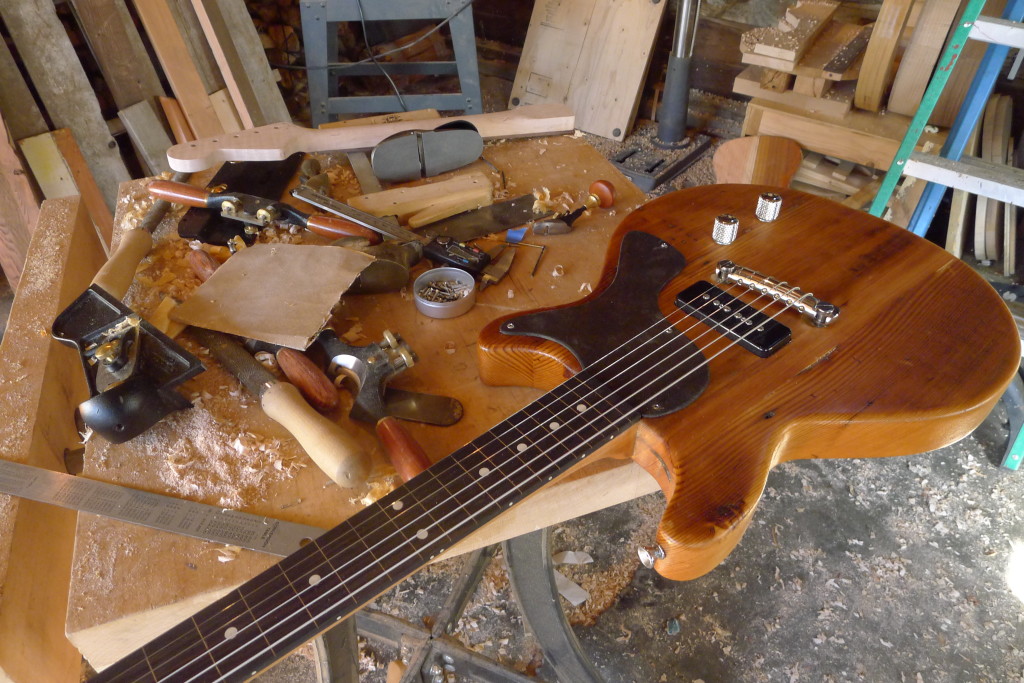 FJ: I thought you were going to say it went back to red!
FJ: I thought you were going to say it went back to red!
DS: No, no, that actually would be funnier. But, no, I just sprayed it black out of a rattle can. I did clear coat it and it has been buffed out.
I think I’ve sold it a couple times, but I still have it. There’s nothing original left on the guitar. It’s like the most tricked-out Japanese Jazzmaster reissue, I think, that there is. Reproduction decal, new frets, new nut. I think the only thing that’s original that came on it is the pickup covers.
But I worked on that guitar myself from the day I got it. I was always taking it apart and putting it back together, figuring it out. And as I got older I just thought, “Hey, I’d really like to learn how to build.” So I was off.
